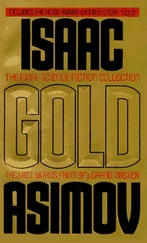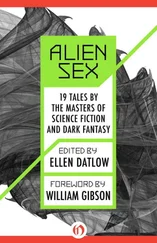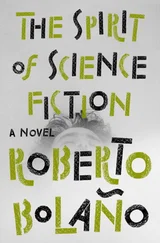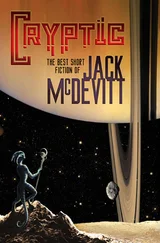What are they thinking?
I’m furious at this. Furious with the journal editor, for not spotting this late addition before it was forwarded to me. Furious with the authors, for adding to our mutual workload. Furious for their presumption, that I will presumably be sufficiently distracted by this to overlook the existing flaws – like a magpie distracted by something shiny. (Except that’s a myth; corvids are not attracted to shiny things at all.)
Furious above all else that they are prepared to squander this good and original science, to slip it into this paper like a lazy afterthought, as a kind of intellectual bribe.
No, this must not stand.
I put the 4WD back into gear. I must settle my thoughts before firing back an intemperate response. But really, I’m enraged. I bet they think they know who I am. I imagine encountering them out here, running them down, feeling the bounce of my wheels over their bodies. I’d stop the 4WD, get out, walk slowly back. Savour the squelch of my boots on the marshy ground.
Their whimpering, their broken-boned pleas.
‘You think this is how we do science, do you?’ I’d ask them, entirely rhetorically. ‘You think it is a kind of game, a kind of bluff? Well, the joke’s on you. I am recommending your paper be rejected.’
And then I would walk away, ignoring their noises, get back into the 4WD, drive off. At night their cries would still come in across the marsh, but I would not let myself be troubled. After all, they brought this on themselves.
But that sparrowhawk, I’ll admit, was beautiful.
I GO OUT to the walk-in traps and collect the overnight haul. There are almost always some birds in the snares, and almost always some starlings. It is how we ring them, bring them in for study, assess their overall genetic fitness. Generally they are none the worse for having been caught up in the nets overnight.
I collect ten adult specimens, let the others go, and take the ten back to the hut.
A firm in Germany has made the digital polarising masks for us. They are elegant little contraptions, similar in design to the hoods fitted around captive birds of prey. These are smaller, though, optimised to be worn by starlings, and to offer no significant resistance to normal flight. Each hood is actually a marvel of miniature electronic engineering. Bulging out from either side are two glassy hemispheres.
In its neutral mode, the bird has an unrestricted view of its surroundings. Each hemisphere, though, is divided into digitally-controlled facets. These can be selectively darkened via wireless computer signals, effectively blocking out an area of the starling’s vision.
The consequence of this – the point of the masks – is that we can control the birds’ collision-avoidance response remotely. By making a given bird think it is about to be struck by another bird, we can cause it to fly in any direction we choose.
Again, it is asking too much of human reflexes to control a bird at such a level. But the computers can do it elegantly and repeatably. Each of our ten hooded starlings then becomes a remote-controlled agent, under our direct operation. Like the robot sparrowhawk, we can steer our agents into the murmuration. The distinction is that the hooded starlings do not trigger a threat response from their seven neighbours; they are absorbed into the whole, accepted and assimilated.
But they can influence the other birds. And by careful control of our hooded agents, we can initiate global changes in the entire murmuration. We can instigate domains, break them up, make them coalesce. Anything that happens under the influence of natural factors, we can now bring about at our will.
By we, of course, I mean I.
Old habits die hard. Science is always done in the ‘we’, even when the work is borne on a single pair of shoulders. But frankly, I am starting to doubt the commitment of my fellow researchers. There is always a division of labour in any collaborative enterprise, and sometimes that division can seem unfair. If the brunt of the work is my responsibility, though, I fail to see why I should not receive the lion’s share of the credit.
As I wait for the murmuration to form, I make some deft amendments to the list of the authors, striking out a name here, a name there.
Feathers will fly, of course.
TEN BIRDS MIGHT not seem much but these birds are like precision instruments, guided with digital finesse. To begin with, we – I – restrict myself to only minor interventions.
I make the murmuration split into two distinct elements, then recombine. Suitably encouraged, I quarter it like a flag. I pull it apart into four rippling sheets of birds, with arcs of clear air between them. The edges are improbably straight, as if the birds are glassed-in, boxed by invisible planes. But that is the power of incredibly delicate control processes, of stimulus and feedback operations happening much too swiftly for human perception. If an edge starts losing coherence, the computer makes a tiny adjustment to one or more of the control starlings and the order is reestablished. This happens many times a second, at the speed of avian reactions.
They have always lived in a faster world than us. They live a hundred days in one of our hours. To them we are slow, lumbering, ogrelike beings, pinned to the ground by the stonelike mass of our bodies. We envy them; they pity us.
I push forward. I carve geometries out of the murmuration. I fold it into a torus, then a ribbon, then a Möbius strip. I do not need to know how to make these shapes, only to instruct the laptop in my desires. It works out the rest, and becomes more adept as it goes along.
I make the murmuration spell out letters, then I coax those letters into lumpy, smeared-out words. I spell my name in birds. They banner around me like the slogans towed by light aircraft. I laugh even as I feel that I have crossed some line, some invisible threshold between pristine science and sordid exploitation.
But I carry on anyway. I am starting to think about those domains, those hints of modular organisation.
How far could I push this, if I were so determined?
ANGRY EXCHANGES OF emails. Editor not happy with this latest change of direction. Much to-ing and fro-ing. Questions over the change in the listed authors – deemed most unorthodox. Accusations of unprofessionalism. If we were in a room together, the three of us, we might get somewhere. Or we might end up throwing textbooks.
Is this a travesty of the way science ought to be done, or is it science at its shining best – as loaded with passion and conviction as the any other human enterprise? No one would doubt that poets squabble, that a work of great literature might take some toll on its creator, that art forges enemies as readily as allies. Why do we hold science to a colder, more emotionless set of standards? If we care at all about the truth, should we not celebrate this anger, this clashing of viewpoints?
It means that something vital is at stake.
Hard in the spitting crucible of all this to remember that every one of us was drawn to this discipline because of a love of birds.
But that is science.
MY PROPOSITION IS simple. The domains are controllable. I can cause them to form, contain the shape and extent of their boundaries, determine the interaction of their vector groups with the surrounding elements. I can move the domains around with the flock. I can blend one domain into another, merging them like a pair of colliding galaxies. Depending on their vector properties, I can choose whether that act results in the destruction of both domains or the formation of a larger one.
I sense the possibility of being able to execute a kind of Boolean algebra. If the domains behave in a controllable and repeatable way, and I can determine their states – their aggregate vector sums – then I can treat them as inputs in a series of logic operations.
Читать дальше












